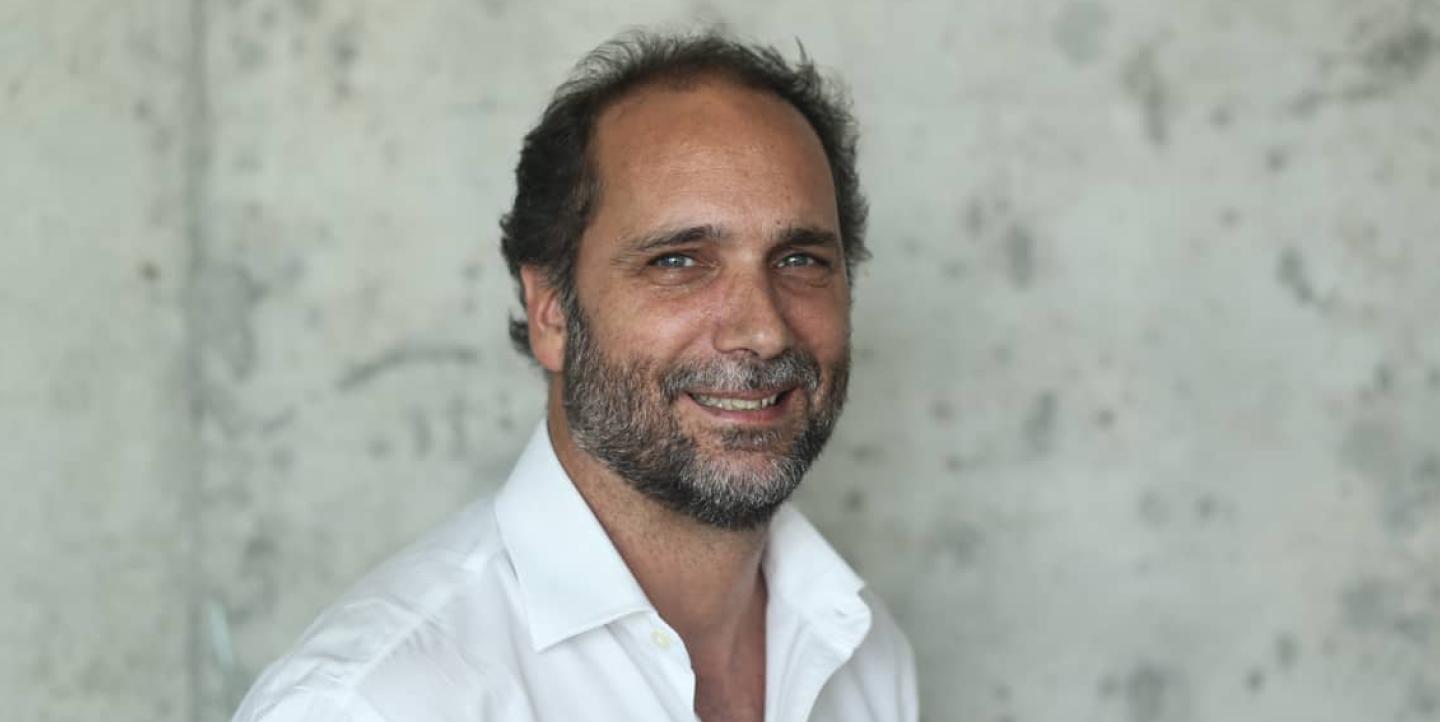For Argentinian journalist Chani Guyot, journalism centers around purpose and impact. When he recognized a pattern of news avoidance in his community in Argentina, he knew it was imperative that journalists better engage their audiences.
Guyot worked for more than two decades at the Argentinian newspaper, La Nación, where he worked as the company’s first director of innovation leading teams in charge of modernizing the newspaper, before becoming editor-in-chief. He left to develop a new media project, and in April 2018 launched RED/ACCIÓN, a digital platform that actively involves audiences while taking a solutions-based approach, with the goal of fostering a positive impact on society.
Currently an ICFJ Knight Fellow, Guyot is working to create a new collaborative network under RED/ACCIÓN called the Human Journalism Network, which will seek to portray the stories of how people, communities and organizations are facing and solving today's most urgent problems. The initiative will promote content-sharing between its 20 members, in both Spanish and English.
How did you begin your career in journalism?
I started contributing to the newspaper at our school, it was a print edition. There, I wrote and I found myself also editing and designing in the early ages [of the news industry, when] we went to a printing press and they printed the columns. Then you cut them and you put [the columns] with glue on a page and then they printed all the newspapers. It was like love at first sight.
After contributing to some magazines and working as a freelancer, in 1996 I started working at La Nación, a major newspaper here in Buenos Aires, Argentina, where I learned everything about the craft.
It never crossed my mind to do anything other than being a journalist with an emphasis on being an editor. I understand myself as a generalist, not a specialist. This is the approach I've always tried to have.
Why did you start RED/ACCIÓN, and what prompted you to create a solutions-based, human-centered journalism outlet?
We built RED/ACCIÓN with a small team and focused on this kind of journalism that cares about its impact, and how it affects its audience and the world. At that time and some early previous years, I've been familiar with solutions journalism and I love the concept. But when we started developing RED/ACCIÓN, we believed that you cannot build a core media around [solutions journalism] specifically.
We rethought our work as what we call "human journalism," where we add to some journalism concepts some other approaches that probably are not aligned to where larger networks, for example, stand, but we believe it's part of [journalism]. For example, we love the stories of people, and sometimes [some of these people] are heroes. We pay a lot of attention to how we interact with our audience. And again, all those ingredients put together this kind of approach that we call "human journalism."
It’s also a philosophical idea in terms of when we publish something, we ask ourselves, what is the impact of what we are publishing in our people, to the audience, and also with the people that are portrayed?
How did working with ICFJ's Velocidad program in 2020 help advance RED/ACCION’s goals?
When we started, we knew that news avoidance was a real problem. And in a way we founded RED/ACCIÓN to confront the problem, to handle the problem, to see what we can do with news avoidance.
But of course, we are also working on the track of sustainability. One of the many changes that are happening in our industry has to do also with business models and sustainability. Velocidad gave us a strong push that drove us to launch our content agency that in the last year has been very important as a revenue stream for our model.
Having said that, I have to say that even though we've won lots of awards and we have a strong audience and we are doing something significant and relevant, we are still looking for a robust business model. That is still part of the journey and of what we are trying to achieve. With Velocidad, we made a big step forward on how you need to manage a startup media business. Also, I have to say in Argentina, under a very distorted business context: I mean, we are running a 100% inflation rate. That's a challenge for every company.
How has IJNet helped your career as a journalist?
I believe that today's knowledge industry is not in the books. Today, industry knowledge, it's in publications like IJNet. Every time you find a case or deep dive into a specific aspect of our industry, well, that's where we learn a lot. Of course, you learn from your experience and from your success and your failures, but you also learn from others.
It’s part of my routine to read publications like IJNet, which report in terms of what is happening in our industry with this kind of approach, or what is happening with this world, or what these specific media [organizations] have achieved in their own markets. I believe that learning among partners is essential in this time in our industry. I'm truly convinced that being part of alliances, partnerships and peer learning — it's essential to do this at this moment of journalism and media.
What has been your favorite project to work on and why?
We believe, and we understand, that RED/ACCIÓN is also a platform for experimentation. And probably one of the most beautiful stories we've portrayed because of the way we wrote it, was a video in partnership with a civic civil society organization here in Argentina. It’s called Techo, or "Roof," and they work building shelters and houses for people that live in the streets, or [who] have very poor health conditions. We wanted to create a sort of first-person view-point video [around] what do these people experience when it is raining and are frightened that water may come into [their] house.
Our team gathered with these families and we told them the project and they jumped in. We created this WhatsApp group and then we had to wait until a storm came. In real time, they tell us and we experience how they live that moment, a specific moment. Video is more moving, of course. It creates lots of empathy with the problem. It shows us that there is lots of space for experimentation in storytelling.
I believe that as an industry, we have a responsibility in terms of just keep experimenting with our storytelling formats and keep addressing our most important challenge. That is, to keep people informed in a relevant and interesting way to help our audiences be better citizens and better neighbors.
What projects are you working on right now?
The Human Journalism Network, which we have just launched. We are launching with the support of the ICFJ, and it's the core of my fellowship where we want to bring 20 media from all over the world — Spanish and English — with a very simple idea: every partner brings two original, reported stories of what we've called human journalism. Then we handle translations and replications.
We believe that we might, on average, multiply [a story’s] reach by 18 times. So [the writer’s] stories are going to reach new audiences, but then also get 38 other stories to be published to serve your audience. As simple as it sounds, it's also tricky because it demands extreme collaboration — everybody has to do [their] own work and [ensure] the stories are well-reported, well-sourced, well-written and so on. We have a lot of trust and a lot of hope in this kind of project that in a sense tries to expand the practice and the reach of human stories from all over the world.
Photo courtesy of Chani Guyot.
This interview has been edited for length and clarity.


